We are the prime choice of the people when it comes to the assistance they need so they can finance their homes.

Real Estate Agency

Choosing a realtor is one of the most critical decisions you’ll make when buying or selling a home. A knowledgeable and experienced real estate agent can make the process smoother and more successful, while the wrong choice can lead to frustration and disappointment. To help you find the right realtor for your needs, we’ve compiled a comprehensive guide on the key factors to consider during your selection process.
Before you start searching for a realtor, it’s essential to clarify your real estate goals. Are you buying or selling a home? Are you interested in a specific neighborhood or type of property? Knowing your objectives will help you find a realtor with expertise in your desired area and specialization.
Begin your search by asking friends, family, and colleagues for recommendations. Personal referrals are often the most reliable way to find a trustworthy and reputable realtor. Real estate professionals who come highly recommended have likely provided excellent service to others in your network.
Look for realtors who are licensed and members of the National Association of Realtors (NAR). Additionally, consider their experience and track record in the local real estate market. An agent with a proven history of successful transactions is a valuable asset.
Utilize online resources to research potential realtors. Most agents have websites or profiles on real estate platforms, allowing you to learn more about their specialties, listings, and client reviews. Pay attention to their online presence and how they market properties.
Don’t settle for the first realtor you come across. It’s a good idea to interview several candidates to gauge their knowledge, communication skills, and compatibility with your personality and goals. During these interviews, ask questions about their experience, recent sales, and strategies for achieving your objectives.
Choose a realtor who specializes in the specific area where you want to buy or sell a home. Local expertise is invaluable when it comes to understanding neighborhood dynamics, property values, and market trends.
Effective communication is essential throughout the buying process. Ensure that the realtor you choose is responsive, available when you need them, and willing to provide regular updates. Clear and open communication will reduce stress and keep you informed.

A skilled negotiator can make a significant difference in the final outcome of a real estate transaction. Ask potential realtors about their negotiation strategies and their success in securing favorable deals for their clients.
Understand the realtor’s commission structure and any additional fees involved. Be transparent about your budget and expectations to avoid misunderstandings later. While price is a factor, it should not be the sole determinant in your decision.
Trust your gut feeling about the realtor you’re considering. You should feel comfortable and confident in their abilities and trust that they have your best interests at heart.
Ask for references from past clients and read online reviews. These can provide valuable insights into the realtor’s reputation and performance.
Carefully review any contracts or agreements before signing. Ensure that you understand the terms, including the duration of the agreement and the realtor’s responsibilities.
Choosing the right realtor is a critical step in any real estate transaction. Take your time to research, interview, and evaluate potential realtors to find the one who aligns best with your goals and needs. A skilled and trusted realtor will not only streamline the buying or selling process but also maximize your chances of a successful and satisfying outcome.
There are steps to buying a home, but first, you need to get your finances in order and find the right lender for your mortgage.
The home-buying process has been broken down into 10 steps. We call it a buying-a-house checklist. There are choices to be made and things to do at each step. Some steps are very stressful, others are quite cool, and some are just plain annoying. Each step will get you closer to your goal of homeownership.
Yes, it’s important to be financially prepared to purchase a house. (See Step 2 for more information). Are you emotionally ready to buy a house? Even though it is your starter home, you are making a significant financial commitment and planting roots.
It is important to consider your future goals. Can I buy it with a partner? If so, how are you going to spend your money? Are you willing to move for work? Do you have thoughts of starting a family? These big-picture considerations can help you decide if this is the right time for buying a house.

Buying a home may be the largest financial decision of your life by buying a house. Before you do, ensure that you have solid finances.
A home affordability calculator will help you calculate your budget. It takes into consideration your income, debts, and location. This calculator will show you how much your monthly mortgage payments could add up, and what your financial situation might look like as a homeowner.
This is important to keep your dreams in check. Although you might be eligible for a substantial mortgage, that doesn’t necessarily mean that you want to dedicate that much of your income to housing.
Also, check your credit score. Higher credit scores are the best way to get a lower interest rate on a mortgage. Learn about the different mortgage options available to you based on your credit score. It may be worth waiting to get homeownership if your credit score is not in good shape. Instead, do what you can to improve it.
Once you have determined your financial capabilities, you can determine how much money you will need to save for a downpayment. Many homeowners choose to make smaller down payments than 20%, even though it used to be the norm.
Although a smaller down payment will require less upfront money, it will mean you’ll need to pay mortgage insurance which can increase your monthly payments. The minimum down payment depends on the type of loan that you take out.
You may be interested in state programs for first-time buyers if this is your first house or if it’s been a while since you last owned one. Many provide financial assistance, including down payment assistance.
Gift money can also be used to help increase your down payment if you have a friend, family member, or relative who can afford it. The rules regarding gift money are different depending on the loan program.
It’s not hard to come up with a list, both of the essentials and of the nice-to-haves, for your home. There are many details to consider when looking for a home.
Attached house or a detached house? A traditional single-family home might be the best option for you if you want a yard. If you live in an area with high density or don’t want to manage all the maintenance, a condo or townhouse may be your best option. Co-ops may also be an option in some cities. These co-ops can be cheaper than condos, but they are more difficult to finance.
Where is your ideal place? Now that you know where you want your home to be, and you have decided to stay in the state you live in, it is time to find a neighborhood. Consider safety, amenities, such as walkability, green space, or coffee shops, and costs.
This can include property taxes, and HOA fees if applicable. You should also consider the school district. Even if you do not plan on having children, the school district can have an impact on the value of your home and affect your resale prices.
Are you looking for a move-in-ready or fixer-upper property? It’s easy to buy a house that you can move into. If you live in a competitive or expensive market, you may be able to afford a bigger house or move into a more expensive neighborhood by taking over a property that is in need of some TLC. You will have to do the work and pay the money to make the property livable.
The type of mortgage that you choose to purchase a house will affect how much you can qualify for it, including the down payment amount and the repayment terms. The right home loan will increase your chances of approval and could save you thousands over the long-term.
It is important to understand the pros and cons of each type of mortgage before you make a decision about which one to choose. These are the most common types of mortgages.
You may be able to choose between an adjustable-rate mortgage (also known as an ARM) or a fixed-rate mortgage. Fixed rates are fixed, while adjustable rates can change or increase. As you may have guessed from their names, adjustable rates are variable.
An ARM loan may have a lower interest rate than a fixed-rate loan. This allows you to purchase more property for the same monthly payments. However, rates can change over time.
The mortgage term will also be chosen. The most popular mortgage term is 30 years, although 10, 15, or 20-year terms are also available.
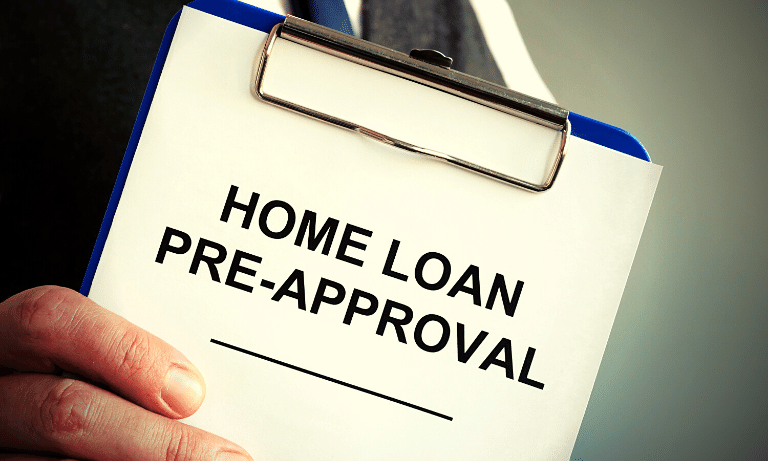
It’s now time to search for a mortgage lender. There are many lenders available, including large brick-and-mortar lenders with familiar names, nonbank online lenders, and smaller credit unions and local banks that might offer better service.
The first step in looking for lenders is to determine if they offer the loan type you need. If you have made a decision to get an FHA loan but they are not an FHA-approved lender then move on. Beyond that hurdle, it’s important to compare their sample rates with current mortgage rates, determine your closing costs, and compare mortgage origination fees. Most likely, this information is available on their websites. However, to obtain more numbers, a loan officer will be required.
It is important to work with a lender in order to be pre-approved for a mortgage. The lender will be able to give you accurate numbers if you have provided detailed financial information.
This includes a hard inquiry that will be reported to your credit report. The good news is that if you apply to multiple lenders at the same time, it will only count as one hard inquiry. Shopping around might help you find a lower rate.
It can take a lot of time to gather all documents needed for preapproval. It can be time-consuming to gather all the documents needed for a preapproval letter from one lender. However, you will find it easier to apply with other mortgage lenders. The benefits you’ll receive are well worth it.
You can get a Loan Estimate along with the preapproval letter that will tell you how much the lender is willing to lend you. Although this form isn’t final, it allows you to compare rates, fees, and other costs between lenders since they all use the exact same form. Pre-approval letters are typically valid for 60 to 90 days. After that, they will need to be renewed.
Pre-approval letters can also show sellers and agents that you are serious buyers who can obtain financing. This can be a significant advantage over other home shoppers. Pre-qualification is another term you may have heard.
It gives you an estimate of the amount of money that the lender will allow you to borrow, based on your self-reported data. Although the terms can be interchanged, a preapproval letter is more important. However, neither preapproval or prequalification guarantees that you will close the loan.
Now that you have been pre-approved for a mortgage and you know what type of house you want, let’s start looking for someone to help. A good real estate agent can make all the difference in the buying process, whether they are able to help you find the right house or provide moral support during the frustrating search.
Interviewing at least three agents is a smart idea. Ask friends and family who have recently purchased a home if they would recommend their agent. The one rule is this: Do not use the agent selling your home. Your agent should be able to advocate for you and negotiate on your behalf.
The seller usually pays a commission to the buyer’s agent. You may have to sign a representation agreement, which will make you pay the commission if the seller does not. Although it is rare for the seller to pay, it could happen if you are buying a property for sale by owner. However, you should still carefully read the agreement and confirm who will pay.
Have you found the right home for you? It’s time to make an offer. A realtor can help you find comparable sales information as well as any insight about the sellers that they may have gleaned from their agent (e.g. if they have already moved to a new area and are more motivated to sell). A real estate lawyer may be helpful. A lawyer may be required in certain states to assist with any real estate transaction.
You can make a counteroffer if the seller declines to accept your offer. It all depends on why they turned it down. Talk to your agent if the seller objects to your offer. You can then decide whether you will accept it or not. These negotiations are where a buyer’s agent truly earns their money.
Accepted offer? Congrats! You’re now ready to move on. This is also when you’ll likely write your first check. The earnest money is the deposit you make towards the purchase of the house. It is usually placed in an escrow account and most buyers use it to close the deal.
A basic home inspection will help you identify any potential problems and make recommendations for repairs. This inspection covers every aspect of the house, including the foundation and roof.
You may need to have one of the more specific types of home inspections, in addition to the standard. You may also want to inspect any features of the home, such as a pool or septic system, as these can be dangerous.
The home inspector should be chosen and paid for. You may be able to negotiate with the seller if the inspection uncovers issues that were not disclosed in the seller’s disclosures.

It’s finally here! It can be less nerve-wracking to familiarize yourself with the standard closing documents before closing.
The closing disclosure must be provided by your lender at least three business days prior to the actual closing. It is possible to compare the closing disclosure with your Loan Estimate in order to determine if any changes have occurred. This will give you an estimate of how much cash you’ll need for closing.
You’ll conduct a final walkthrough with your agent on closing day or shortly thereafter. Although you’ll be excited, make sure that everything is as agreed.
It has been a blur of emotions and seemingly endless paperwork. But now, you have the keys to your new home.
Although buying a home is a wonderful experience, it can also be very stressful. This will make the experience less stressful by having a plan of attack, knowing your budget, and how to get approved.
Also, keep in mind the cost of owning a house. There are many ways to finance your home, and you can get loans of all types.
It is no secret that it is very expensive to buy a home these days. It’s not cheap to sell a home. Therefore, it doesn’t matter how much a home sells for, it is unlikely that the seller will leave the table with the exact amount. This article will give you a breakdown of the costs involved in selling your home, and offer some tips to keep them from spiraling out of control.
A home’s “curb appeal” is often referred to by real estate agents. This refers to how it looks to potential buyers. You must take a thorough look at your property from the outside. Are the paints in good condition? Are the bushes well trimmed? Is the garden weeded and trimmed? You should invest time and money to fix any areas that fail to pass.
Once you have made your home attractive enough to potential buyers, it is time to update the interior. Are the wallpaper and paint still in good condition? Are there obvious repairs needed?
Sellers are increasingly staging their homes to improve their marketability. This could mean anything from decluttering to renting or buying new furniture. A professional stager can be hired or a realty agent can give tips.
A 2021 National Association of Realtors report estimates that professional services could cost $1,500. This is a significant amount, and in many cases will be more than the cost of the service itself. According to the NAR survey, 23% of agents who staged sales reported an increase in their selling prices of 1% to 5%. 29% reported an increase of anywhere from 6% up to 20%.
According to NAR, living rooms (90%), kitchens (80%), master bedrooms (78%), and dining rooms (69%) are the most staged rooms.
While small, inexpensive improvements can make a big difference in a remodeling project’s success, they are not as effective. Remodeling’s 2021 Cost and Value Report found that not one of 22 remodeling projects would be able to recoup their full costs at the time of sale. A minor kitchen remodel averaged 72%, while a major project averaged 54%. The only project that was worth the money was to replace a garage door with one made of steel. It cost 94%.
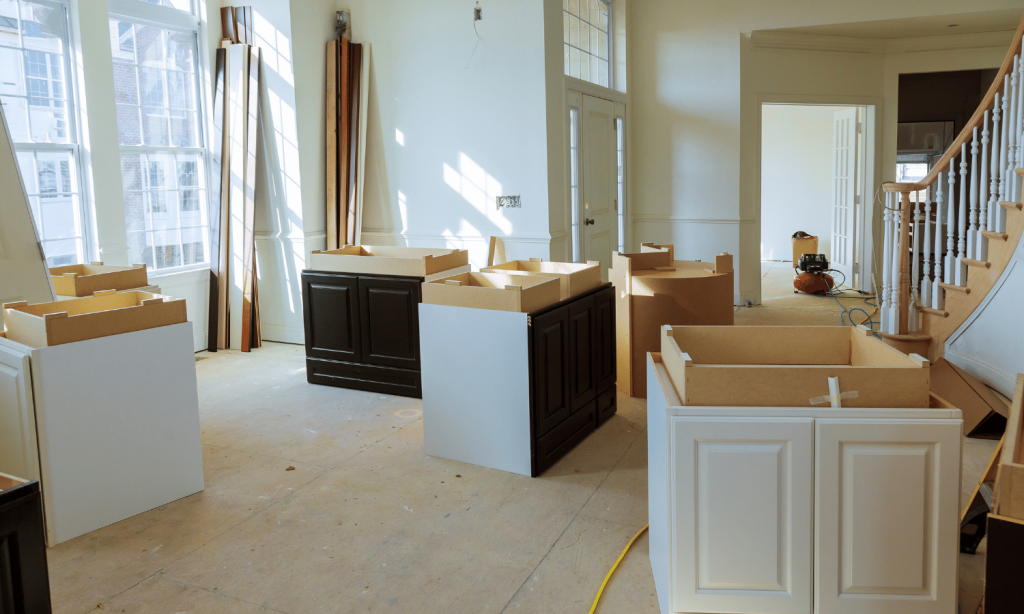
A home may receive multiple offers in a strong housing market. Sellers don’t have to offer additional incentives to buyers to make their homes more competitive. However, in a weaker housing market, there may be some incentives that make a difference.
Incentives include paying points towards the buyer’s mortgage (also known as a seller-paid point), covering closing costs, or leaving behind furniture and appliances.
You will need to pay off any mortgage debts that you have. To make the deal go through, you will need to have a letter or statement from your lender. This will include information about how much you owe your lender and any prepayment penalties.
If your lender has an escrow account, they should apply the amount to your outstanding debts or refund it.
Selling a house is expensive. Often, the commissions paid by real estate agents are the largest expense. It may surprise some sellers who are first-time buyers that the seller usually pays both their agent’s and the buyer’s commissions.
How much does a real estate agent cost? The standard commission split between seller and buyer agents is 6%. However, commissions can be negotiated and some agents will accept a lower commission.
Discount brokers may charge sellers a flat fee or a lower percentage (often between 1% and 2%) These include both online brokerage sites and local realtors. There are tradeoffs and you might not receive the same level of service or attention if you pay a higher rate. You may also have to pay a standard commission for the buyer’s agent.
Selling your home yourself can save you commissions. You will still need to pay the buyer’s agents and you will have to do a lot of the work your agent would. It works for some sellers.
The bulk of closing costs for sellers is covered by the costs of real estate agents’ commissions. While some people choose to sell their homes without an agent to save money, you will still need to do a lot of work and pay the buyer’s agent.
Although the law in each state may differ on whether you are required to hire a lawyer to sell your home, it is often a good idea to do so. The lawyer representing the seller at closing can draft and review the sale contract.
The price you pay will vary from one place to another, but it is likely to range from several hundred to several thousands of dollars.
The bulk of closing costs that the seller has to pay will be covered by the commissions paid by real estate agents. However, there may also be other expenses. The seller must pay transfer taxes that some states impose on property transfers. The association may also charge a transfer fee if the property is part of a homeowners association.
These rules can also vary from one state to the next. In many cases, the buyer and seller can negotiate who will pay a specific closing cost as part of the contract.
Federal income taxes may apply if you make enough money from the sale of your home. If you meet the following two requirements, you can exclude a portion from your profits: The home must have been yours for at least 2 years and it must have been your residence for at least 2 years of the last 5.
If you are eligible, you can exempt up to $250,000 as an individual and $500,000 as a married couple filing joint tax returns. Keep in mind that your profit is not based on the amount you paid initially for the home but rather on your adjusted cost basis. This is the sum of the amount you paid for your home and any improvements that you have made over the years.
For example, if your home has a new roof or central air conditioning system, these expenses will increase the basis and decrease your profit. It is possible to add some of the closing costs you incurred when the house was purchased to the basis.
You should also consider the time you lived in your home and how much capital gains tax it will result in. Your profit, if any, will be treated as a long-term capital loss if you own the home for less than a year. It will be subject to the potentially much higher tax rate for short-term capital gain if you own it for less than one year.
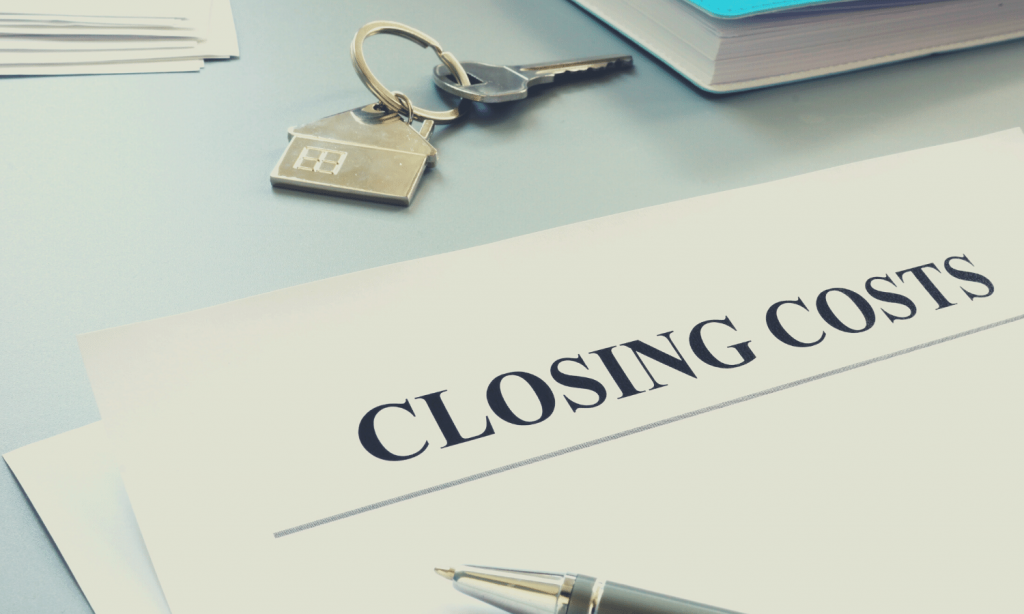
The fees that homebuyers must pay are numerous. Make sure you bring enough checks to your closing. The typical closing costs include a mortgage origination charge, title search fee and title insurance premium. These fees can be negotiable, and sellers may offer to contribute as part of your agreement. The average closing fee for a buyer is between 3% and 6% of the sale price.
Tax deductible closing costs are rare. Mortgage interest (including points), and real estate taxes are exceptions. This is only if either the seller or buyer itemizes deductions in their tax returns for the year. Sellers can add some of the original closing costs to their adjusted cost basis for their homes to reduce their tax liability.
No-closing-cost mortgages are those in which the lender adds the borrower’s closing cost to the loan amount, or charges a higher interest rate. This means that even though you don’t need to pay closing costs at first, they will be added to your loan amount over time.
You can easily feel overwhelmed by the costs involved in selling your house. These costs can actually increase the resale price of your home and help you sell it faster. Not only will it save you stress, but also make your home more attractive to potential buyers.
The bottom line is that most of the costs of selling your home are, like home ownership itself, often a wise investment. If you are unsure of the costs involved in putting your home up for sale, you may benefit from asking a professional real estate agent to help with the process.
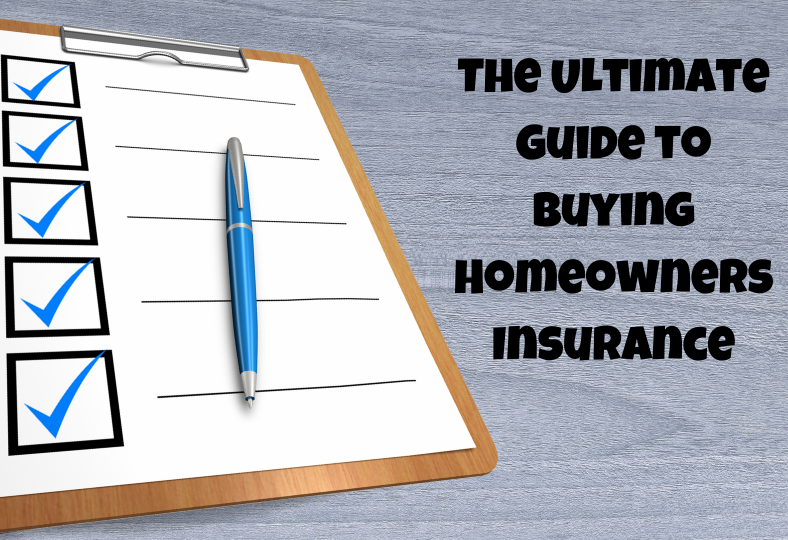
Unless their home is damaged or someone is injured on the property, homeowners insurance isn’t something most people think about. Good homeowners insurance can make all the difference between financial security or disaster.
You don’t have to stay with the same carrier; it is actually recommended that you shop around for lower rates. There are countless websites that compare the rates of numerous homeowners insurance companies, and you may find a suitable carrier among them that charges you less. Premiums for homeowners insurance are constantly rising which may become a problem in the future as these premiums are consistently rising.
Pricing for the coverage of your residence–a large portion of your homeowners insurance–is determined by the cost of repairing or rebuilding your home. Contrary to popular belief, home insurance premiums don’t correlate with home prices. Therefore, real estate inflation experienced by many areas in the past year will not affect home insurance costs. These other trends may also have an impact:
In such an atmosphere, you might be questioning exactly how to cover your residence effectively, reduce your premiums, and also handle your present insurer– or discover a brand-new one. These suggestions might help.

How well an insurer handles claims is the best way to judge an insurance company. Some state insurance departments publish rate comparisons which can usually be found on the company’s website. Some insurance companies may also take surveys on customer satisfaction.
Customer satisfaction was best predicted by companies’ damage estimates. Lower-rated insurance companies often tended to have a greater percentage of consumers who disagreed with their damage price quotes and also felt that their last settlement was not large enough.
A large number of homeowners indicate that they have changed carriers within the past three years. Over half of those who switched to another carrier said that they did so because they were offered a lower price. Not to be confused, however, is the fact that select top-rated companies use their own agents and their homeowners insurance is not included in online shopping. To get quotes, you will need to contact each company separately.

Homeowners coverage is not subject to state mandates, unlike auto insurance. If you have to rebuild your home, being underinsured could result in you being responsible for large sums.
On the other hand, you don’t want to buy too much coverage. For example, it would be an error to assume that you require coverage equal to the market value of your home. This value also includes the land on which your home is built, which will not change even after a disaster. This is why your home’s value will usually be greater than its cost to completely rebuild. It is recommended to have enough insurance to cover the cost of the labor and materials required to rebuild your home. This is called the replacement value, or replacement cost. This amount can be calculated by your insurance agent.
Standard homeowners insurance policies provide “loss-of-use” coverage. This policy pays a fixed amount per day to allow you to live in another place while your home is being built. Rebuilding can take longer if certain building components are difficult to find which could mean that you may spend more time outside of your home than usual. It is suggested that you discuss this coverage with your agent in order to ensure that you have sufficient funds going forward.
Standard policies will be more expensive if you add on options or have separate coverages. This could save you money over the long-term. Remember that not all carriers will offer these extras in their basic overage option and some may charge extra premiums. These are some add-ons you should consider:

Homeowners policies usually include a liability insurance limit of $100,000 to cover damages and costs resulting from lawsuits. Depending on where you live you may be sued for all of your assets, including investments and real estate. Boost your limit if the worth of your assets goes beyond $100,000.
It is best to purchase coverage that is at least equal in value to your assets. This extra protection can be provided by umbrella or excess liability coverage. In the event of a lawsuit for property damage or accidental injury, it will increase your liability protection beyond what is provided by your home policy. You may also be protected from lawsuits for libel and slander, but you may need to increase the liability coverage limits of your homeowners insurance before you can get it. An umbrella liability policy for $1 million typically costs only a few hundred dollars every year. Getting more umbrella coverage can help you save money.

Flooding will not be covered by homeowner’s insurance if it is caused by a pipe, or another system in your home. Flood insurance must provide protection against flooding or mud flows from the outside only. Even if your property is not at risk, this coverage can prove to be very cost-effective. It has been proven that a portion of flood losses paid by insurance companies have taken place in low-risk flood areas.
You can purchase flood insurance coverage through any insurance agency that sells homeowners or car insurance. You can purchase flood insurance through the National Flood Insurance Program or through a private insurance company of your choosing.
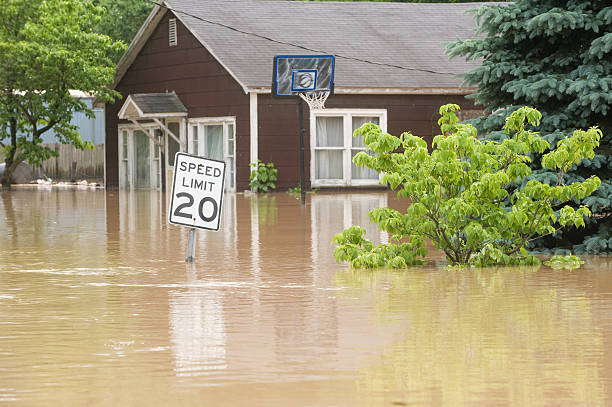

Multiple claims within a short time frame will likely result in a rate increase, or worse, your insurer may not renew your policy. There is not a significant number of homeowners who have seen an increase in their insurance rates after submitting a claim so there isn’t much to lose by filing one claim.
If you don’t file a lot of claims, your insurer won’t raise your rate or decline your renewal request. However, you should not make claims for less than the deductible. This could result in you losing any discounts that you are entitled to for infrequently filing claims. Before you report, talk with your insurance agent about the pros and cons of filing a claim.
There are many reasons why insurance companies drop customers, including:
Talk to an agent if you have been dropped and cannot find coverage through a private insurance company. You can also contact your state insurance department or go online to get a list of local insurers.

Cost effective roofing materials are those that provide long term or permanent solutions and can be applied on commercial, residential, or industrial properties. Many factors are taken into consideration when deciding the right roofing materials for the building. The main thing that is looked at is the design and the purpose of the roofing. The cost of these roofing materials depends on the materials chosen, the design, its installation, and its maintenance. Whether you are doing your roof yourself or using a roofing contractor, you want to choose roofing materials that will withstand the climate in your area.
Asphalt is one of the most cost effective roofing materials you can use on any roof. When properly applied, asphalt shingles are able to provide superior protection against the elements while providing superior aesthetics. Because asphalt shingles come in such a wide variety of colors, designs and styles you are sure to find the right roofing style and color that will fit perfectly with your home’s design and structure. By using the right roofing professional you can be sure to get the job done correctly and cost effectively.
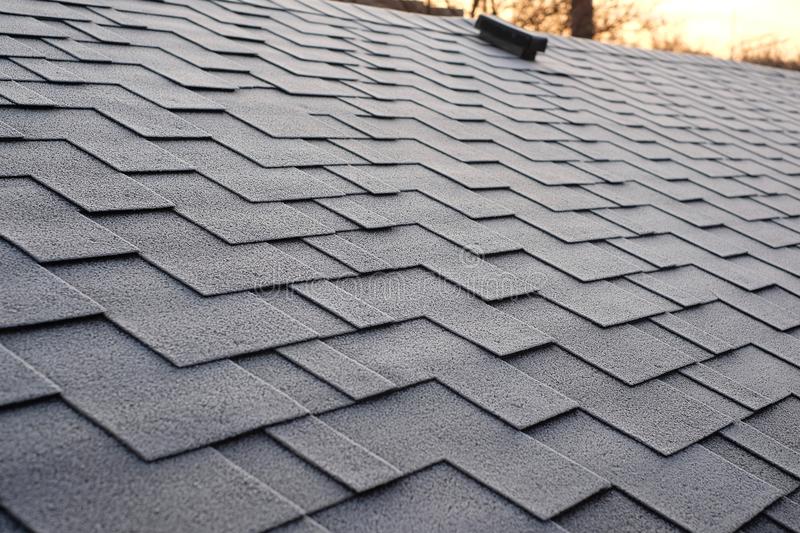
Over the last few decades, wooden shingles have become very popular for homes around the country. There are many advantages to wooden shingles and one of them has to do with energy costs and the environment. It seems that now and then, people want to be more environmentally conscious and these shingles are an easy way to do that. In addition to the low cost and the energy benefits, wooden shingles are also a visual delight for the eyes. They bring a sense of old tradition to a home and when done correctly, they can really add to the look and the architecture of a home.
There are many different types of wooden roofing materials, including shakes and shingles. Each one of these brings its own benefits to the table. For example, wooden shakes are usually made of pine bark that has been ground into a powder and mixed with water and then poured into mold. These shakes are then installed by float or shake roofing contractors so that the final product is a very durable and long lasting one.

The cost of metal roofing is almost half that of wooden roofing. The main reason behind this is that metal is a more durable material than the other roofing materials. It is very easy to install as well. This metal roofing can also withstand extreme weather conditions and is ideal for those who live in areas that get heavy snowfall and high temperature. They’re also better at resisting hail damage which is an additional roofing problem that can drive up the cost of roofing repairs.

Some roofing systems today that are very popular include solar glass tiles, solar roof panels, and solar roof shingles. Each of these systems has its own advantages and disadvantages in terms of building your home more energy efficient. The solar glass tile is very durable and strong, however, it is the most fragile and needs to be properly installed by a professional roofing contractor or a skilled electrician. The solar roof panels are more easily installed, but you have to have a good amount of knowledge about electrical wiring and have plenty of experience in installing solar panels.
One of the biggest advantages of using solar roof tiles is that they are a much more affordable way of going solar than having to purchase all of those separate solar panels. The roofing material can often be purchased for less than $200. For the cost of just a couple of solar roofing panels, you can save a huge chunk of money on your energy costs every month which can help also you save money for your mortgage. In addition, if your roof is damaged due to a storm or hurricane, the solar roofing material can actually provide some roofing solution by providing some additional strength to the roof structure.

You can’t afford to leave shingles on your roof for any length of time as they begin to deteriorate and become extremely vulnerable to the elements. When choosing a roofing contractor, you should ensure that they have a proven track record and are able to provide you with a warranty on your roof. It’s best to get a few estimates from roofing contractors prior to deciding on one as their services can vary dramatically.
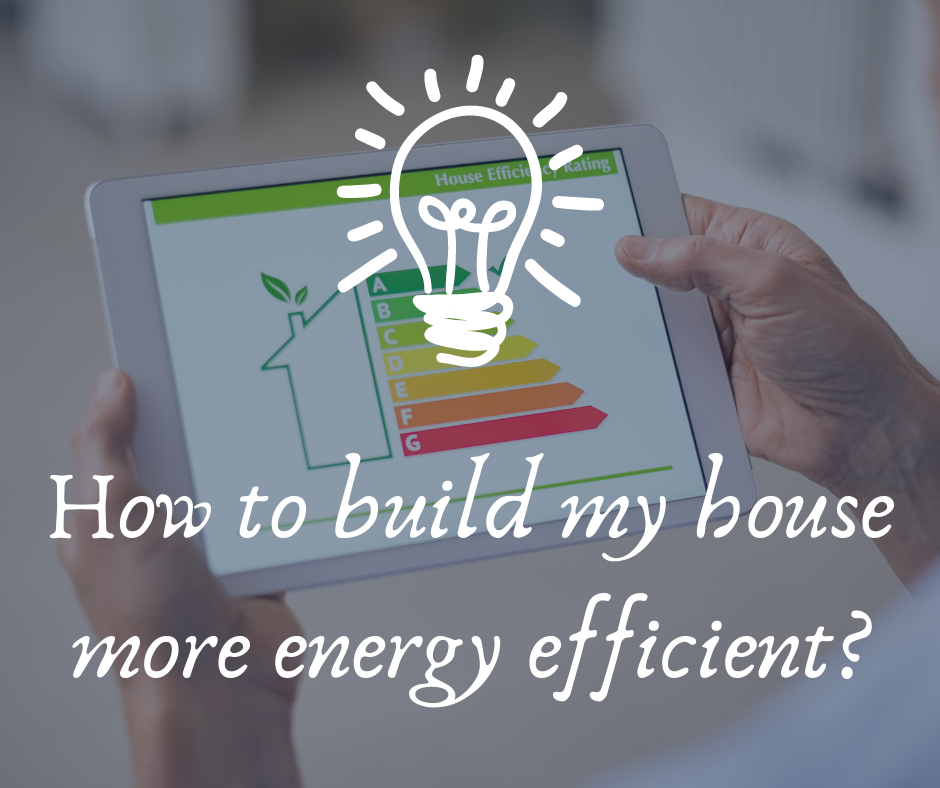
Energy Efficient Homes can save you money and help protect the environment. A home that is more energy efficient helps your family reduce the cost of energy bills. Even if you’re not paying too much, you should still consider saving. There are several different ways to make an energy efficient house, but not all of these are suited for all climates or housing needs. These must-haves for energy efficient homes work well regardless of where you live, helping you reach a net zero energy house in no time.
Spray foam insulation is one of the best products for insulating your home and keeping it warm or cold. This type of insulation not only keeps your home cool and cozy, but also keeps the elements outside, such as wind and rain out. The product is actually made from two different materials, polyols and isocyanates, that react when mixed together and expand to more than 30-60% of their original volume once they are sprayed in an area. Once this happens, the product becomes a foam that fills whatever is placed inside it. This makes it perfect for sealing in areas around your home, especially in places where air movement would cause movement in the materials.
Because of the amazing ability of this product, there are many places in the house where spray foam insulation can be effective. These areas include in cracks, crevices, corners, under sinks, bathrooms, in ceilings, walls and floor cracks, in the attic, and in basements. Even though it can be used anywhere you see a crack, crevice, or moisture, it is most often used around the foundations of the home. Spray foam insulation can seal up cracks and crevices, but it also acts as a vapor barrier to keep out cold and heat, and acts as a protective layer against corrosion and rust. This means that it works great in areas that would otherwise be prone to damage caused by moisture leaking into the home. When properly installed, you can enjoy all these benefits for years to come.
Adding energy efficient windows to your home can also make a substantial difference. Double glazed windows are expensive, but pay off big when it comes to lowering energy bills. Over the years, double glazing has made homes more energy efficient than ever before, lowering the amount of heat lost through your windows. While this step alone isn’t enough, it does help in many ways. Another kind of window to think about are skylights. While we can’t always control the sun’s rays, we can greatly increase our chances of beating it at its own game. Energy efficient skylights are a great way to do this, providing natural light to your home throughout the day. Homes in colder climates, such as Canada, could even benefit from the heat the light brings in. Energy Efficient homes naturally benefit from high levels of sunlight because increased sun exposure means less need for lighting throughout the day.

A quality energy efficient home plan encompasses energy-efficient appliances, building materials and building structures that are constructed with high energy-efficiency levels. The primary focus of this kind of planning is to decrease energy requirements through energy-efficient construction practices and renovation of structures. Energy Efficient Homes reduces unnecessary energy demand, greenhouse gases, global warming, and environmental pollution. They also provide homeowners significant cost savings over traditional constructed homes and provide them with healthier living conditions.
A house is considered to be an energy efficient home when it meets the Energy Star qualifications of the United States Department of Energy. Energy Star Qualified homes do not only offer energy efficiency upgrades for existing homes, but they also help families lower their energy bills and save money on their utility bills as well. To qualify for Energy Star Home, a home should have at least an average amount of energy usage per year and the energy efficiency performance level of its heating, ventilation, and air-conditioning systems should meet the guidelines set forth by the US Department of Energy. A house with a combination of state-of-the-art appliances that work together to create an energy-efficient home can also qualify for Energy Star status. Energy Star appliances include built-in and appliance boilers, natural gas and electricity hook ups, water heaters, refrigerator and floor heating systems, electric panels, high-efficiency fluorescent bulbs, low energy lighting, geothermal and photovoltaic, hot water systems and low energy computers.
Most energy efficient homes have installed energy-saving appliances that are energy efficient, provide sufficient hot water, cool air conditioning, provide adequate insulation, and have the most current energy saving technology. The amount of electricity you use in a day, in a month or in a year depends on the use of energy systems that convert energy to electricity. Energy efficiency can also be measured in kilowatt hours per unit or CWh. An Energy Star home uses at least a minimum of a CWh/yr of electricity and has a rating on the energy efficiency scale that is related to the cost of replacement of energy systems over a period of time.
The community of Mahogany which is located in the Southeast portion of the province of Calgary is one of their popular lake communities. Mahogany is one of the newer communities in Calgary has an amazing selection of homes ranging from detached bungalows, single family homes, condominiums, and townhomes. This community has 70 active houses for sale in Mahogany with an average price of $585,027 and has 57 active condo units and/or townhomes with an average price of $527,650. In 2019, a total of 174 single family homes were sold in the market in 109 days. The average price for these single family homes were $548,882. In 2019, 65 townhomes and/or condos were sold within an average of 105 days and an average price of $435,629. Most of these real estate properties were built in 2016 and have an average size of 1,524.

Known as one of the highly sought-after inner-city neighborhoods situated in Calgary, Banff Trail has a great variety of houses to offer from. Ranging from affordable townhomes, high-rise condominiums, detached 1950s bungalows, land in-fills, and spacious single family homes. Young families and professionals prefer this neighborhood as it is located near famous amenities and transportation systems such as the C-Train LRT system and trails such as Crowchild and Banff Trail. There were 28 single family private homes for sale in Banff Trail in 2019 at an average cost of $636,442. Land in Banff Trail is consistently sought after and the Average Days on Market (DOM) for homes in Banff Trail was 49 days. There were 4 townhouse deals in Banff Trail which sold for $484,750 and they took a normal of 50 days to sell. There are 13 active houses with an average price of $713,015 and 3 active condo/townhomes in the area with an average price of $339,233 and with an average size of 1,453.
Varsity is a vibrant and easily accessible neighborhood in the northwest quadrant of Calgary. This community was originally three different neighborhoods namely Varsity Village, Varsity Acres, and Varsity Estates but it was made into one popularly known as just Varsity. This community also offers one too many reasons for buying a real estate property in the area. One of the top reasons is the great transportation system of the community such as Shaganappi Trail and Crowfoot trail that is nearby Varsity which allows residents to go to nearby amenities easily. Downsizing has been a trend nowadays and Varsity is an ideal place to check out especially the new Groves of Varsity and Chateau on the Green. This community is one of the top choices of the medical community since it is close to the Foothills Hospital and Alberta Children’s Hospital. In 2019, homes for sale in Varsity had an average days on market of 43 days, there were about 86 single family homes sold with an average price of $689,293. Varsity also has 76 condo and townhomes that were sold in 2019 with an average price of $321,018.
Straightforward bath room or haven? The one challenge is that yours is perhaps not giving off the vibe you see for this in-home getaway. It is renovation time!
It’s certainly a large venture to take on, however it is nothing you can not manage on your own. Don’t believe me? Let me show you how with these 6 simple to follow tips.
Whether it is large or small, a person ought to continually make certain that you have enough money prior to embarking on any property makeover endeavor. With medium expenses starting from 10k as much as and even over, 23k, you’ve got to prepare in advance. Make sure you can pay for everything you envision before diving in.
Still hold just a second. Are you considering moving in the near future? It’s possible that you need to reconsider the redesign perhaps. If though it helps the price of your property you will want to do it. Home buyers do consider two spaces in your house when appraising a house. A great kitchen, bathroom or both, can easily improve home price as well as allure.
Whenever you decide to go ahead with your redesign goals as well as make a decision on an general amount you can spend, you should take a moment and ascertain where every single cent will go. Quite often, you can bet that labor will set you back about a third of the funding.
Then, you’re able to decide what you must include and what you’re able to trim if cash is tight. In most cases, it is best to get rid of lavish extras if money’s tight—you will definitely need new floor tile, but you won’t need a vapor shower.
Men probably not take just as much time getting prepared in the morning as women however that reality is at the very least both men and women spend a minimum of 15-20 minutes every morning getting prepared. And as a result – you spend lots of time in there – you ought to make it the way you need it. Awesome.
Generally there are many of very good info on the web where by you will be able to see awesome design concepts. Head out and get some inspiration. Start with sites including Pinterest and Instagram. However you’ll potentially see all varieties of great design ideas, often they are pricey and out of your budget. Simply find the nugget ideas that you can afford and cherrypick these.
Think before you do anything! Just think of it. Should your bathroom makeover needs you to basically strip the room down to nothing rendering it not usable will you go in the meanwhile? It goes without saying, still you need to figure this out before you get in to your redesign project.
If you have some other bath room in the house, you’re lucky Normally, you may have to arrange with a neighbor to use their facilities when needed or stay with a loved one for a few days whilst the water’s off. One more very good idea is to just pick up a portable toilet to have on-site during remodeling. No matter what, have this plan in place before you’re in desperate need of a bath room and have nowhere to go.
It could go without saying, however you’ll want to also know the particulars of how you’re going to manage the expenses of your overhaul and any additional charges that could arise in the project. Virtually any financial institution will lend money for residential renovation projects and yet they also need an itemized report of your bills and budget.
You shouldn’t stress, you will find lots of choices to choose from for funding your household remodeling job. You may well be able to take out a mortgage or even use the money you’ve saved over the years. Just be sure you have everything in order and that you’re stable in the financing department. There’s nothing like making plans then the unexpected happens like having to replace a boiler in Drayton Valley under harsh conditions as seen there in winter months.
Now and again you will want to come back around and cite both your budget and your original plan in order to assure that you are on the right track. Stick to your original budget/plan and you are going to be well on your way to a rewarding bath-room remodel.Going off the rails with respect to your plan and budget can’t just be pricey but adds time to your bath room renovation. Then again it’s up to you to follow the outline and make the job as easy as possible. After all is said and done and its all over with, you can easily just sit back, light a jasmine candle and enjoy your new happy place.
As real-estate becomes more globally with the increased transparentness and power of the constantly evolving world wide web, realtors have vast business opportunities to capture valuable international, long distance business that they didn’t in the past have access to.
The business of dealing international real estate is on the rise, largely as a consequence of the connectivity of our society and the Internet.

Given the statistics from 2017 we understand that foreign real estate buyers accounted for over $153 billion of the entire purchases in the USA which subsequently is an increase of the former year of a massive fifty percent. Likewise this signifies 10% among all domestic real estate transactions in the U.S.. All data in this article sourced from NAR (National Association of Realtors) and are deemed to be accurate.
By far the most promising facet to dealing with international buyers, from the real estate agent’s perspective, is transactions involving an international client commonly return more substantial commissions. Along with the reality that many international investors are well-off wealthy elites searching for fruitful investments as well as high-end luxurious 2nd or getaway properties.
And yet incorporating the international investor to your repertoire probably will not be as easy as finding them can be complicated.
The greatest difference in between working with the national populous in contrast to internationally, would be the language barrier. However many foreign clients pay people to breakdown the language barrier when seriously interested in investment in another country.
China dominates the headlines all over the world when it comes to international business and in real estate this runs specifically true given the data shows that of the complete sales volume in the USA to international traders, China has 50% of that. All irrespective of barriers including language and social distinctions.
With such a highly profitable marketplace in existence, how do you break in to it?
CPROP’s end-to-end digital transaction administration platform is made to present real estate brokers to international leads and help them safely and transparently close deals. Many realtors claims blockchain technology and digital currency is the future and that she’s seen a steady rise in it being used in real estate transactions.
The short answer is that it involves technology that facilitates interaction and connects a group of proven companies to collaborate on ushering a deal from contact to close. We are going to present a couple of ways any commercial real estate agents might hedge in to this market sector.
Hedging in on the international real estate industry is not straight forward for real estate brokers who have not ventured here before. Realtors interested in entering the market of dealing with international buyers and vendors should really think outside the box and search segments of the Web where these pocket communities may meet.
In the event that the platform boasts a company directory with unfiltered buyers ratings and reviews plus automated translations, better still.

A long distance deal, particularly among parties in separate countries, is usually a formula for miscommunication and, in the worst cases, fraud.
Two remarkably important items to think about when involved in international real estate are security and trust. You will need to cover yourself and your client whilst maintaining the trust of the other party.
Blockchain has proven to be the quintessential secure way to electronically conduct transactions. Blockchain enables real estate contracts to generally be so significantly protected/encrypted that blocks any changes be undetected.
Moreover, brokers can make use of smart contracts to execute escrow, which provides a secure mechanism for home buyers to put up serious finances.
One thing is closing sales within the country however it’s always a totally different thing when finalizing international transactions and these sales require far more care to ensure a smooth conclusion.
Are you aware of your transactions state in real-time, what is left to finish and who should next do what in the process?
Consider this though, as a real estate agent doing business in international transactions, wouldn’t it be helpful to have a SaaS tool that managed all the digital areas from start to finish for any kind of international real estate transaction? The upside to this expected future technology is how it would enhance the work-flow, ensure security and ease communications for real estate brokers of international real estate.
Once you opt for a mortgage, the onetime cost gets cut down into many installments and you can select the plan of your liking. That way you only must pay your installments and minimal interest every month.
For many people around the globe, buying their homes is the most expensive thing they ever buy. Having a mortgage helps a lot in balancing your funds for you while you transact a large sum of money from your accounts over a certain period.
Choosing the best mortgage lending company does not mean going for the one that offers good interest rates. You’ll need to find the mortgage company having high professional standards and values. Keeping an eye on the following aspects might be of great help.
Look Around:
The best practice for picking your mortgage lender is to look around, meet different lenders and get to know their people, interest rate plans and more details of the loan they’ll be giving you.
Many people just go with what their real estate agent recommends, which isn’t a healthy approach. You should do your own research too.
Ask About Their Experiences:
You have every right to ask mortgage lenders a fair amount of questions before you make a decision. Ask them about their experience with first-time homebuyers and what are the statistics of the deals they have made?
Inquire about the loan they’ll be offering you and the stellar credit involved.
Present the situation your family is facing and ask their opinion on it. This should give you an idea of how experienced they are in dealing with people with different mindsets.
Check out the Lender’s Reviews:
What other people think of the lender is a great source of information to base your decision upon. Lender’s reviews will shed light on how they’ve treated their previous customers.
You may use Zillow, which contains a very large lender directory having thousands of lender’s reviews. Just type the name of the lender you’re interested in and get to know about their past work.
Get a First Impression:
The first impression of your lender is very important. Notice their behavior carefully upon meeting them for the first time.
See how they respond to your interest and how excited are they about your interest in their company.
What are the options they put in front of you? And how proactive are they in that discussion?